Dr. Greg Bollella, CTO, Internet-of-Things at VMware
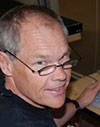 Dr. Greg Bollella, Internet-of-Things CTO, VMware, Inc., has been interested in algorithms and software architectures that support the deterministic execution of logic within general-purpose operating systems and virtual machines since 1992. At VMware he is investigating infrastructure management for the Internet-of-Things. While a Senior Engineer at IBM, he was fundamental to the industry effort that spurred the creation of the Java Community Process and established JSR-01 the first activity under the JCP and led the JSR-01 Expert Group that defined the Real-Time Specification for Java. During his work on the Golden Gate project at Sun he concurrently held a position, for four years, at the Jet Propulsion Laboratory, California Institute of Technology, as Distinguished Visiting Scientist. He holds a Ph.D. in computer science from the University of North Carolina at Chapel Hill. His dissertation research is in real-time scheduling theory and real-time systems implementation. This work creates an architecture that defines fundamental issues that are necessary for supporting real-time applications within general-purpose operating systems and language runtimes.
Dr. Greg Bollella, Internet-of-Things CTO, VMware, Inc., has been interested in algorithms and software architectures that support the deterministic execution of logic within general-purpose operating systems and virtual machines since 1992. At VMware he is investigating infrastructure management for the Internet-of-Things. While a Senior Engineer at IBM, he was fundamental to the industry effort that spurred the creation of the Java Community Process and established JSR-01 the first activity under the JCP and led the JSR-01 Expert Group that defined the Real-Time Specification for Java. During his work on the Golden Gate project at Sun he concurrently held a position, for four years, at the Jet Propulsion Laboratory, California Institute of Technology, as Distinguished Visiting Scientist. He holds a Ph.D. in computer science from the University of North Carolina at Chapel Hill. His dissertation research is in real-time scheduling theory and real-time systems implementation. This work creates an architecture that defines fundamental issues that are necessary for supporting real-time applications within general-purpose operating systems and language runtimes.
Presentation: IoT Infrastructure: What is it? How big is it? How are we going to monitor, manage, and secure it?
When I first started looking into The IoT four years ago for VMware the community, System Integrators deploying complete IoT solutions with technologies from multiple vendors, IoT analytic solution providers, IoT PaaS providers, etc., had given only a passing thought to the compute, networking, and storage infrastructure, external to the data center, necessary to collect, filter, and transport data to analytic engines, collectively, as enterprise-grade infrastructure. I, and VMware, firmly believe then as we do now that the functional and physical components of such infrastructure must be monitored, managed, and secured just as any other component of compute, networking, and storage anywhere across an enterprise. It’s become clear that IoT will change our industry in two fundamental way: 1. We’ll need physical systems (currently known as IoT gateways) to de-couple the sensor, machine, or ‘Thing’ network from the WAN (public Internet or Enterprise WAN), and 2., the predominant direction of data flow will reverse 180 degrees (from data center-to-user to ‘Thing’ network-to-(a system where analytic engines can consume and analyze the data and produce value for an organization). I purposely did not use the term ‘data center’ in the latter part of the previous statement as many now believe that ‘compute will move to the Edge’. This talk will explore both of these topics and give solid technical, financial, and business reasons that support these two fundamental shifts in our industry. Also, I’ll discuss how we at VMware are producing products that will help our customers, the IT organizations of all major world-wide enterprises, be ready for the fundamental changes wrought by IoT. Ready to secure, monitor, and manage their IoT infrastructure and extract maximum ROI from IoT solutions they deploy by positioning systems at optimal locations relative to the source of IoT data streams.
Nirupam Sannagowdara Dasappa, Senior Scientist & Programme Director, IoT Energy Research Institute @ NTU, and Co-Founder & CTO Printed Power Pte Ltd
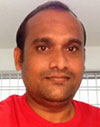 Nirupam Sannagowdara Dasappa is an Engineering Leader with 18+ years of global executive experience in Internet of Things (IoT), Cloud computing, Data analytics, Visual Computing, Automotive Telematics, Smart cities. Focus on Design Strategy, Innovation, New business development/Expansion, Commercial strategies, Presales, Thought leadership, Joint ventures and Public private partnership (PPP). Built start-up ventures, successful IoT operation, IoT platforms, IoT products from scratch. Serves as chief ICT architect and chief instrumentation expert for ICT driven future (smart) cities and on not-for-profit boards. Nirupam is an expert in the IoT space, leading successive generations of remote connectivity platforms and solutions, playing key roles in designing, evangelizing, and realizing innovative connected product solutions, successful deployment of connected products in the marketplace. Nirupam built robust IoT platform, has proven capability to connect and analyse over trillions of data events and devices. Enterprise Grade Fleet Management Platform, IoT for railway transport. Intelligent Video Surveillance Platform. Smart Homes. Plug & Sense Platform for Smart cities. IoT deployment in Energy, Mobility, Climate, Retails/Financial Services, Maritime, FMCG, Oil Gas, Manufacturing. Wearable devices, Industrial Gateways
Nirupam Sannagowdara Dasappa is an Engineering Leader with 18+ years of global executive experience in Internet of Things (IoT), Cloud computing, Data analytics, Visual Computing, Automotive Telematics, Smart cities. Focus on Design Strategy, Innovation, New business development/Expansion, Commercial strategies, Presales, Thought leadership, Joint ventures and Public private partnership (PPP). Built start-up ventures, successful IoT operation, IoT platforms, IoT products from scratch. Serves as chief ICT architect and chief instrumentation expert for ICT driven future (smart) cities and on not-for-profit boards. Nirupam is an expert in the IoT space, leading successive generations of remote connectivity platforms and solutions, playing key roles in designing, evangelizing, and realizing innovative connected product solutions, successful deployment of connected products in the marketplace. Nirupam built robust IoT platform, has proven capability to connect and analyse over trillions of data events and devices. Enterprise Grade Fleet Management Platform, IoT for railway transport. Intelligent Video Surveillance Platform. Smart Homes. Plug & Sense Platform for Smart cities. IoT deployment in Energy, Mobility, Climate, Retails/Financial Services, Maritime, FMCG, Oil Gas, Manufacturing. Wearable devices, Industrial Gateways
Presentation: The ‘How’ Industrial IoT – Setting Yourself Up for Success
Internet of things (IoT) is a smart technology that connects anything anywhere at any time. Such ubiquitous nature of IoT is responsible for draining out energy from its resources. Therefore, the energy efficiency of IoT resources has emerged as a major research and development issue.
In this talk, sharing an information on implementation effort of proposed energy-efficient architecture for IoT, which consists of several layers, namely, sensing and control, information processing, and presentation. The architectural design allows the system to integrate energy harvesting/self powered battery, ultra-low power sensors, robust radio’s etc. This mechanism allows the energy-efficient utilization of all the IoT resources. The experimental & deployment results show a significant amount of energy saving in the case of sensor nodes and improved resource utilization of cloud resources.
Also, outlining the challenges related to edge computing, connectivity, data visualization, modeling and deployment of IoT applications and potential research directions in resolving these challenges.
Dr. Michael Karner, VIRTUAL VEHICLE Research Center, Graz, Austria
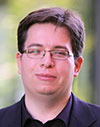 Dr. Michael Karner is lead researcher for Embedded Systems at VIRTUAL VEHICLE in Graz, Austria. He received a master’s (Information and Computer Engineering) and doctoral degree (Electrical Engineering) from Graz University of Technology. He has been active as project manager for the ARTEMIS project DEWI (focussing on dependable wireless infrastructure), with a budget of 40M€ and involving nearly 60 partners from 11 European countries. Currently, he is the project manager for the successor ECSEL project SCOTT (focussing on cost-efficient solutions of wireless, end-to-end secure, trustworthy connectivity and interoperability in the Internet of Things), with a budget of 40M€ and involving nearly 60 partners from 11 European countries and Brazil). He has more than ten years industrial and scientific research experience in the field of wireless systems, communication networks and protocols, automotive electrics/electronics and software, cooperative safety systems as well as co-simulation. Furthermore, he is active as a reviewer and technical program committee member in several conferences and journals.
Dr. Michael Karner is lead researcher for Embedded Systems at VIRTUAL VEHICLE in Graz, Austria. He received a master’s (Information and Computer Engineering) and doctoral degree (Electrical Engineering) from Graz University of Technology. He has been active as project manager for the ARTEMIS project DEWI (focussing on dependable wireless infrastructure), with a budget of 40M€ and involving nearly 60 partners from 11 European countries. Currently, he is the project manager for the successor ECSEL project SCOTT (focussing on cost-efficient solutions of wireless, end-to-end secure, trustworthy connectivity and interoperability in the Internet of Things), with a budget of 40M€ and involving nearly 60 partners from 11 European countries and Brazil). He has more than ten years industrial and scientific research experience in the field of wireless systems, communication networks and protocols, automotive electrics/electronics and software, cooperative safety systems as well as co-simulation. Furthermore, he is active as a reviewer and technical program committee member in several conferences and journals.
Presentation: Smart Wireless Solutions – Building Trust in the Internet of Things
The first part of the presentation will give a comprehensive summary of use cases, results, and expected socio-economic impacts of the DEWI project.
Smart wireless systems (wireless sensor and actuators networks, WSNs) have a number of explicit advantages over wired solutions. However, wired technologies still dominate, mainly due to the lack of dependability of wireless networks.
Therefore, in 2014 the large pan-European R&D project DEWI was launched, focussing on dependable solutions for WSNs and short-range communication (TRL 4-5). With its four industrial domains (Aeronautics, Automotive, Rail, and Building) and 21 industry-driven use cases / applications, DEWI aimed at providing and demonstrating key solutions for wireless seamless connectivity and interoperability, by considering everyday physical environments of citizens in buildings, cars, trains and airplanes. DEWI, with 58 industrial and research partners from 11 European countries, created a universal cross-domain reference architecture, fully compliant with international standards (ISO/IEC) and thus fostering reusability, scalability, and interoperability of DEWI solutions (and beyond). Besides creating 30 re-useable technical building blocks, DEWI focussed on the scalability of all its solutions. Key results of DEWI were made tangible via 20 attractive real-life demonstrators all over Europe.
The second part of the presentation will give an overview of the SCOTT project, will highlight issues of trust and trustability in the Internet of Things, and will present first project results.
Creating trust in wireless solutions and increasing their social acceptance are major challenges to achieve the full potential of the Internet of Things. Therefore, SCOTT – Secure COnnected Trustable Things, a pan-European effort with 57 key partners from 12 countries (EU and Brazil), will provide comprehensive cost-efficient solutions of wireless, end-to-end secure, trustworthy connectivity and interoperability (Technology Readiness Level 6-7) to bridge the last mile to market implementation. SCOTT will not just deal with ‚things that are connected‘, but with ‚trustable things that securely communicate‘, i.e. things interconnected by dependable wireless technology and valuing the end-users‘ privacy rules.
SCOTT uses a standardized multi-domain reference architecture, created in a predecessor project (DEWI and its “Bubble concept”) and being fully compliant with ISO 29182 – Sensor Network Reference Architecture, which fosters reusability, scalability, and interoperability of SCOTT solutions. SCOTT also utilizes a clearly use-case driven approach with 15 use cases from different areas of high relevance to European society and industry; a specific focus will be put on cross-domain use cases and heterogeneous environments, emphasizing 5G and cloud computing aspects to build up digital ecosystems to achieve a broader market penetration.
Use Cases will be further substantiated by the development and utilization of nearly 50 technical building blocks for security/safety, distributed cloud integration, energy efficiency/autonomy of devices and reference architecture/implementations, which are all necessary to realize the SCOTT use cases and facilitate composability of systems as well as cross-domain sharing of trustable wireless technologies and services.
SCOTT will open up new market opportunities for industry, will significantly reduce time to market and decrease costs for trustable wireless solutions on the market, in particular by using new designs and technical building blocks. SCOTT will develop methods and tools capable of meeting prospect use-case requirements on reliability, robustness, security and functional safety even in harsh and/or not trusted environments.
SCOTT will build up and apply a comprehensive, dedicated Trusted System Development Framework to all its use cases to significantly foster acceptance of SCOTT solutions on the market, and to unleash the full potential of the Internet of Things.
Kan Siew Leong, Nanyang Polytechnic
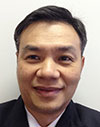 Kan Siew Leong is a Senior Manager of the Communications & Networks Group, and a Lead for the Research and Technology-Transfer Team in the School of Engineering, Nanyang Polytechnic. With over 25 years of experience in networking R&D, implementation and management projects, his current research interests include IoT security, IoT self-localisation, IoT interoperability, self-organising IoT and sensor networks, and network traffic analytic. He is a Lead Principal Investigator (PI) for 3 R&D projects and a Co-PI for another 3 R&D projects with funding from Singapore’s National Research Foundation (NRF-POC and NRF-TRD) and Ministry of Education (MOE-TIF) grants, and created 3 licensing agreements with industry. He has filed 10 patents with 2 US granted patents and 8 Singapore granted patents, and won the Singapore’s Ministry of Education (MOE) Outstanding Innovator Award 2017.
Kan Siew Leong is a Senior Manager of the Communications & Networks Group, and a Lead for the Research and Technology-Transfer Team in the School of Engineering, Nanyang Polytechnic. With over 25 years of experience in networking R&D, implementation and management projects, his current research interests include IoT security, IoT self-localisation, IoT interoperability, self-organising IoT and sensor networks, and network traffic analytic. He is a Lead Principal Investigator (PI) for 3 R&D projects and a Co-PI for another 3 R&D projects with funding from Singapore’s National Research Foundation (NRF-POC and NRF-TRD) and Ministry of Education (MOE-TIF) grants, and created 3 licensing agreements with industry. He has filed 10 patents with 2 US granted patents and 8 Singapore granted patents, and won the Singapore’s Ministry of Education (MOE) Outstanding Innovator Award 2017.
Siew Leong received his BSc. in Communications Engineering (1st class Hons.) from the University of Kent at Canterbury, UK with Rotary Award for being the best student of the faculty. He received MSc. in Communications & Computer Networks from the Nanyang Technological University and was awarded the National Science & Technology Board (NSTB, currently A*Star) Gold Medal for being the top master’s graduate. He is a Senior Member of the IEEE.
Presentation: Co-create & Co-innovate Industrial IoT Solutions with Industry
While the benefits of implementing IoT in manufacturing is obvious, it remains a challenge for local SMEs to create and develop unique selling points for their Industrial IoT (IIOT) services fast, while solving IoT system interoperability issues and mitigating IoT security concerns of their customers.
This presentation covers an introduction of IoT in manufacturing, the challenges faced by SMEs in creating and adopting them, and how several National Centres of Excellence band together to provide an eco-system service in co-creating and co-innovate customised IIoT solutions for SME. We will share some of the IIoT projects developed and adopted by SME, the unique IP created in enhancing security and location tracking of IoT nodes in manufacturing, and our experiences in executing the projects.
Dr. Po-Chou Lin, Chief Researcher, IoT Lab, Telecom Labs, Chunghwa Telecom
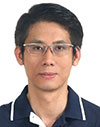 Dr. Po-Chou Lin serves as a chief researcher of IoT (Internet of Things) Laboratory, Telecommunication Laboratories, Chunghwa Telecom.
Dr. Po-Chou Lin serves as a chief researcher of IoT (Internet of Things) Laboratory, Telecommunication Laboratories, Chunghwa Telecom.
He received his Ph. D. degree from Communication Engineering, National Chiao-Tung University, Taiwan at 2003. His work experience includes Switching/Routing Network、3G/4G/5G communications technology, LPWA (Low Power Wide Area) technology, Intelligent Transportation System, Telematics, Connected Car and IoT applications.
Presentation: IoT Development in Chunghwa Telecom (CHT)
In the next presentation, Dr. Lin will give a talk about the IoT Development in Chunghwa telecom. First the IoT policy of Taiwan government is introduced. IoT Opportunities and Challenges for telecom companies are analyzed. CHT also develops its own IoT platform to build up the ecosystem. In the end, several IoT applications based on this IoT platform are discussed.
Prof. Dirk Pesch, Nimbus Research Centre at Cork Institute of Technology in Ireland
 Dirk Pesch is a Professor and Head of the Nimbus Research Centre at Cork Institute of Technology in Ireland. The Nimbus Research Centre, that Dirk directs, carries out research and innovation in Cyber-Physical Systems and the Internet of Things with applications in energy and water resource management, smart manufacturing, health and assisted living, smart cities and the built environment. Dirk’s own research interests focus on architecture and design of low power wireless networks and services for the Internet of Things and interoperability issues associated with the IoT applications. He has over 25 years research and development experience in both industry and academia and has (co-)authored over 200 scientific articles. Dirk is involved in key national research initiatives in Ireland such as the SFI funded CONNECT Centre for Future Networks and its ENABLE smart cities and communities research programme and the CONFIRM Centre for Smart Manufacturing. Dirk is also active in EU funded research projects, including as coordinator. He has been involved with two startups and contributes to international conference organization in his area of expertise. Dirk received a Dipl.Ing. degree from RWTH Aachen University, Germany, and a PhD from the University of Strathclyde, Glasgow, Scotland, both in Electrical & Electronic Engineering. He is a Senior Member of the IEEE.
Dirk Pesch is a Professor and Head of the Nimbus Research Centre at Cork Institute of Technology in Ireland. The Nimbus Research Centre, that Dirk directs, carries out research and innovation in Cyber-Physical Systems and the Internet of Things with applications in energy and water resource management, smart manufacturing, health and assisted living, smart cities and the built environment. Dirk’s own research interests focus on architecture and design of low power wireless networks and services for the Internet of Things and interoperability issues associated with the IoT applications. He has over 25 years research and development experience in both industry and academia and has (co-)authored over 200 scientific articles. Dirk is involved in key national research initiatives in Ireland such as the SFI funded CONNECT Centre for Future Networks and its ENABLE smart cities and communities research programme and the CONFIRM Centre for Smart Manufacturing. Dirk is also active in EU funded research projects, including as coordinator. He has been involved with two startups and contributes to international conference organization in his area of expertise. Dirk received a Dipl.Ing. degree from RWTH Aachen University, Germany, and a PhD from the University of Strathclyde, Glasgow, Scotland, both in Electrical & Electronic Engineering. He is a Senior Member of the IEEE.
Presentation: Challenges for Interoperability in the Industrial Internet of Things
Interoperability is a major challenge for the Internet of Things. A plethora of machine to machine communication standards, data formats and representations, and IoT platforms exist that are all essentially not (fully) interoperable. Each M2M standard comes with its own protocols, message formats and data representations. A number of standards bodies and industry associations are trying to standardize aspects of the Internet of Things space. However, due to the fast developing area and commercial opportunities, many companies move ahead with their own developments in the hope that they will achieve sufficient adoption of their technology so that they do not have to worry about standards.
This talk will summarize the current state of the art in machine to machine communication, data formats and representations, IoT platforms and the challenges that this and other constraints pose for a wide spread adoption of the IoT in industry. We will then explore possible solutions to the interoperability issues and suggest possible paths forward.
Olivier Pfeiffer, QKD Head of Market Development, ID Quantique SA
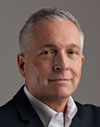 Olivier Pfeiffer is head of critical infrastructure and banking at ID Quantique. He has more than 10 years experience in the security industry and more than 20 in network and internet technologies. Prior to joining IDQ he led the business development activities for Swiss IoT companies in the critical infrastructure, logistics and defense industries as well as media protection companies. Earlier, Olivier also co-founded a number of companies active in Internet-centric media technologies in the USA and in Europe. Olivier graduated from New York University (BA and APC in Business management).
Olivier Pfeiffer is head of critical infrastructure and banking at ID Quantique. He has more than 10 years experience in the security industry and more than 20 in network and internet technologies. Prior to joining IDQ he led the business development activities for Swiss IoT companies in the critical infrastructure, logistics and defense industries as well as media protection companies. Earlier, Olivier also co-founded a number of companies active in Internet-centric media technologies in the USA and in Europe. Olivier graduated from New York University (BA and APC in Business management).
Presentation: Why Quantum Technologies Matter in Critical Infrastructure and IoT?
As devices and systems in our critical infrastructures become ever more interconnected, it is increasingly important to ensure that they have adequate cryptographic protections. This is particularly challenging – yet even more essential – given the potential scalability of the attack vectors in this hyper-connected world. Action is required now, both to ensure current security, but also to prepare upgrade paths for future technology advances. The presentation will review how the emergence of new quantum technologies will impact IoT cryptographic security – both creating in new threat vectors, such as a quantum computer, as well as providing some immediate solutions.
Prof. Seeram Ramakrishna, FREng, National University of Singapore (NUS)
 Seeram Ramakrishna, FREng is a Professor of Mechanical Engineering at the National University of Singapore (NUS). He leads the Circular Economy taskforce with members drawn from across the university, and various national research institutes under the Agency for Science, Technology and Research, ASTAR, Singapore. He is an advisor to the National Environment Agency of Singapore on Industry 4.0 and Circular Economy. He is a member of World Economic Forum’s Technology and Innovation for the Future of Production committee. He chairs the Future of Manufacturing technical committee at the Institution of Engineers Singapore. He is a member of Smart Manufacturing Standards Committee of Singapore. He is a Highly Cited Researcher (highlycited.com; Clarivate Analytics). Thomson Reuters identified him among the World’s most influential scientific minds. A European study (http://www.webometrics.info/en/node/58) placed him among the only five researchers from Singapore with H index over 100, and among the only 1612 highly cited researchers (h > 100) in the world. He received PhD from the University of Cambridge, UK, and The General Management Training from the Harvard University, USA. He is an elected Fellow of UK Royal Academy of Engineering (FREng); Singapore Academy of Engineering; Indian National Academy of Engineering; and ASEAN Academy of Engineering & Technology. He is an elected Fellow of major professional societies in Singapore, UK, India and USA. His leadership roles includes University Vice-President (Research Strategy); Dean of Faculty of Engineering; Director of NUS Enterprise; Director of NUS Industry Liaison Office; Founding Director of N U S Bioengineering; Founding Co-Director of NUS Nanoscience & Nanotechnology Initiative, NUSNNI; and Founding Chairman of Solar Energy Research Institute of Singapore, SERIS. He served on the boards of several national organizations. He founded a successful international organization- the Global Engineering Deans Council, GEDC (http://gedcouncil.org/ambassadors).
Seeram Ramakrishna, FREng is a Professor of Mechanical Engineering at the National University of Singapore (NUS). He leads the Circular Economy taskforce with members drawn from across the university, and various national research institutes under the Agency for Science, Technology and Research, ASTAR, Singapore. He is an advisor to the National Environment Agency of Singapore on Industry 4.0 and Circular Economy. He is a member of World Economic Forum’s Technology and Innovation for the Future of Production committee. He chairs the Future of Manufacturing technical committee at the Institution of Engineers Singapore. He is a member of Smart Manufacturing Standards Committee of Singapore. He is a Highly Cited Researcher (highlycited.com; Clarivate Analytics). Thomson Reuters identified him among the World’s most influential scientific minds. A European study (http://www.webometrics.info/en/node/58) placed him among the only five researchers from Singapore with H index over 100, and among the only 1612 highly cited researchers (h > 100) in the world. He received PhD from the University of Cambridge, UK, and The General Management Training from the Harvard University, USA. He is an elected Fellow of UK Royal Academy of Engineering (FREng); Singapore Academy of Engineering; Indian National Academy of Engineering; and ASEAN Academy of Engineering & Technology. He is an elected Fellow of major professional societies in Singapore, UK, India and USA. His leadership roles includes University Vice-President (Research Strategy); Dean of Faculty of Engineering; Director of NUS Enterprise; Director of NUS Industry Liaison Office; Founding Director of N U S Bioengineering; Founding Co-Director of NUS Nanoscience & Nanotechnology Initiative, NUSNNI; and Founding Chairman of Solar Energy Research Institute of Singapore, SERIS. He served on the boards of several national organizations. He founded a successful international organization- the Global Engineering Deans Council, GEDC (http://gedcouncil.org/ambassadors).
Presentation: IoT and Circular Economy
Since the first industrial revolution generations of people used to linear economy (LE) i.e. produce, use and throw. The LE model depletes materials, energy and water resources. Moreover the undesirable effects of LE on the living environment is evident around the world. Growing consumerism and urbanization raised concerns about the sustainability for future generations. Call for legislative pressure, stricter environmental laws, and coordinated efforts to move away from the LE to circular economy, CE is gaining momentum. New legislations in Europe, China, Japan, USA and Singapore put pressure on industries and businesses to bear the responsibility for environmental impacts of their products over the entire life cycles. China studied the best practices of pioneering EU countries, and passed laws to promote CE. CE oriented industrial system involves the use of renewable energy, elimination of use of toxic chemicals, elimination of waste through superior design of products, resources efficiency, remanufacture products, recover resources at the end of service life, and innovative business models.
Circular Economy (CE) concept is trending around the world with major consulting firms Accenture, Deloitte, Ernest & Young, and McKinsey publishing reports in the last two years. Accenture estimates an economic opportunity of five trillion dollars for businesses moving to the Circular Economy.
Internet of Things (IoT) coupled with new technologies such as sensors, big data analytics, artificial intelligence (AI), machine learning, cloud computing, cyber physical systems, automation, and nanotechnology is an enabler of the circular economy.
For example, IoT, sensors, and big data analytics help to monitor, diagnose, preventive maintenance, and reduce harmful emissions in the transportation sector. New approaches include re-design of vehicles and materials selection with environment in mind, and processes to ensure complete recycling of used vehicles. Application of augmented reality, virtual manufacturing and smart manufacturing or digital manufacturing to shorten lead-time, reduce cost, improve productivity and quality. This is applicable to land, sea, and aerospace transport systems. Similar examples are emerging in plastics, wood, paper, construction, water use, solid waste handling, clean energy generation and use, resources efficiency and productivity of manufacturing processes, agriculture, farm produce, food packaging, beverages, textiles, supply chains, and services sectors.
Using these technologies garments company Zara designs and stock an outfit in its stores around the world in 20 days! Urban farming enabled by these technologies reduces the water consumption and fertilizer consumption while improving the yield and quality. More over these improved practices contribute to lowering of carbon foot print of products. New approaches integrate environmental factors to realize sustainable product design and manufacturing, and eco-friendliness of products and uses. Hybrid technologies involving IoT and CE are to increase net welfare gains with minimal negative impact on the environment and human wellbeing. They are expected to transform the production systems, business models, economic growth, employment, living, and sustainability. They enable the vision of smart, green and livable cities.
This lecture examines how the IoT associated technologies and CE concepts will impact the industry and environment? Other questions that will be addressed include which sectors of the economy will have the most impact? Which industries and businesses will be benefited and who will be affected? What are the opportunities for innovation? What are the best practices around the world, and examples to emulate? What are the changes needed in engineering education to nurture future engineers?
Shigeyoshi Shimotsuji, Software & AI Technology Center, Toshiba Digital Solutions
 Shigeyoshi Shimotsuji is Executive Director of Toshiba Digital Solutions Corp, which drives the digital transformation in business segments of energy, social infrastructure and building facility. Shigeyoshi Shimotsuji served as Corporate Vice President of Toshiba and Executive Officer of industrial solutions business segments from 2012 to June in 2017. He led Toshiba’s IoT and AI strategy for the company’s future growth. He has more than 30 years’ experience in Research & Development of Information Technology in Toshiba and currently he runs Technology Center on IoT and Artificial Intelligence.
Shigeyoshi Shimotsuji is Executive Director of Toshiba Digital Solutions Corp, which drives the digital transformation in business segments of energy, social infrastructure and building facility. Shigeyoshi Shimotsuji served as Corporate Vice President of Toshiba and Executive Officer of industrial solutions business segments from 2012 to June in 2017. He led Toshiba’s IoT and AI strategy for the company’s future growth. He has more than 30 years’ experience in Research & Development of Information Technology in Toshiba and currently he runs Technology Center on IoT and Artificial Intelligence.
Presentation: Industrial AI, Route to the Next Stage of IoT
Industries are digitally transforming like never before and at record speed. One of key drivers is IoT, which collects digital data and converts them to user’s value. The first wave of IoT visualized the state of machines and realized new applications such as condition-based maintenance to manage and operate them efficiently. It was applicable to only expensive devices and machines because of the balance between system investment and returns. The evolution of IoT technologies, particularly AI, expands applications from an individual expensive machine and group of devices in a premise to cities and communities to solve social issues such as urbanization, energy/CO2 issues, aging and labor shortage. This session will share how IoT technologies accelerate the transformation in industry segments and highlights how AI technologies expand of the transformation along with a couple of examples.
Dr. Sumei Sun, Institute for Infocomm Research (I2R),
Agency for Science, Technology, and Research (A*STAR) in Singapore
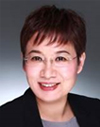 Sumei Sun has been with the Institute for Infocomm Research (I2R) since 1995. She is now Head of the Communications and Networks Cluster, focusing on Smart communications and networks for robust, QoS/QoE-guaranteed, and energy- and spectrum-efficient connectivity for human, machine, and things. She is also the lead principal investigator of the Industrial IoT Research Program at the Agency for Science, Technology, and Research (A*STAR) in Singapore.
Sumei Sun has been with the Institute for Infocomm Research (I2R) since 1995. She is now Head of the Communications and Networks Cluster, focusing on Smart communications and networks for robust, QoS/QoE-guaranteed, and energy- and spectrum-efficient connectivity for human, machine, and things. She is also the lead principal investigator of the Industrial IoT Research Program at the Agency for Science, Technology, and Research (A*STAR) in Singapore.
Dr Sun has authored and co–authored more than two hundred technical papers in prestigious IEEE journals and conferences. She’s inventor and co-inventor of thirty granted patents and over thirty patent applications, many of which have been licensed to industry. For her achievement in technology invention and industry contribution, she and her team was honored with the Scientist-Entrepreneur Award from the Agency for Science, Technology, and Research (A*STAR) in 2008.
Dr Sun has served in many conferences with different roles. Some of her recent IEEE conference services include Executive Vice Chair of IEEE Globecom 2017, be held in Singapore in December 2017, Tutorial Co-Chair of ICC 2019, etc. She’s also serving as an Area Editor of IEEE Transactions on Vehicular Technology, and Editor of IEEE ComSoc Surveys and Tutorials. She received the “Top Associate Editor” award in 2011, 2012, and 2015, all from IEEE Transactions on Vehicular Technology.
She is a Fellow of the IEEE, and a Distinguished Lecturer in the IEEE Vehicular Technology Society’s Distinguished Lecture Program during 2014 – 2018, and Vice Director of IEEE ComSoc Asia Pacific Board (2016-2017).
Presentation: Cognitive Industrial Internet of Things
Industrial internet of things (IIoT), by providing connectivity to machines, robots, and sensors, etc, enables data intelligence-assisted information technology (IT) and operation technology (OT) convergence, and is a key technology in industry 4.0. In IIoT, multi-disciplinary research on communications, storage, computing and data analysis, control and management, and security, as well as cross-disciplinary system-level design optimization is needed, with built-in autonomous learning and adaptation capabilities.
In this talk, we will start with a brief introduction to IIoT, and then share the IIoT research and design challenges. A design approach will then be proposed to overcome these challenges, under the theme of cognitive IIoT in which the device and the network will build up learning capabilities for context-aware resource, interference, and mobility management, automated fault detection and recovery, and robust connectivity; multi-modal security detection capability is incorporated into the device and network for real-time anomaly and security detection and management. The interactive and cooperative edge-cloud analytics will also be introduced to enable low-latency real-time actionable insight and robust feature engineering.
Aaron Voon-Yew Thean, National University of Singapore (NUS), and Office of Deputy President (Research Technology) NUS
 Aaron Voon-Yew Thean is a Professor of Electrical and Computer Engineering at the National University of Singapore (NUS) and the Director of Industry Engagement and Partnerships at the Office of Deputy President (Research Technology) NUS. He is also a consulting Fellow to IMEC, a Nano-electronic Research Center, based in Belgium.
Aaron Voon-Yew Thean is a Professor of Electrical and Computer Engineering at the National University of Singapore (NUS) and the Director of Industry Engagement and Partnerships at the Office of Deputy President (Research Technology) NUS. He is also a consulting Fellow to IMEC, a Nano-electronic Research Center, based in Belgium.
Prior to joining NUS in 2016, Aaron served as IMEC’s Vice President of Logic Technologies where he led IMEC’s International path-finding research consortium on advanced semiconductor technologies, which included top industry partners like Intel, Samsung, TSMC, Globalfoundries, and Qualcomm. Before IMEC, he was with Qualcomm in San Diego, California, USA. There, he led the Strategic Silicon Technologies Group responsible for new System-On-Chip technologies. From 2007 to 2009, Aaron led the technology alliance team to develop the low-power bulk CMOS common platform technology at IBM East Fishkill, New York. He and his team developed the Industry’s first foundry-compatible Gate-First High-k Metal-Gate with novel SiGe channel Low-Power 32nm and 28nm bulk CMOS technologies. It enabled some of today’s most successful smart mobile devices (E.g. Apple A6 in iphone 5, Samsung Exygnos 4, S1 in AppleWatch) in production by the foundry partners.
Aaron started his industry career as a senior staff scientist with Motorola’s Advanced Product Research and Development Laboratory and Freescale Semiconductor. He subsequently led the Novel Device Research Group there in Austin, Texas. He graduated from the University of Illinois at Champaign-Urbana, USA. Aaron has published over 300 technical papers and holds more than 50 U.S. patents for inventions in the field of advanced electronics. He also serves an editor for the IEEE Electron device letters. Most recently, he has been recognized as Returning Singaporean Scientist by Singapore’s National Research Foundation. Aaron’s current research interests include advanced electronic materials, Nanoelectronics for IoT, Next-Generation Wearable Electronics, and Hybrid-Flexible Electronics. Actively contributing to Singapore’s research scene, he serves on multiple scientific advisory boards, including Singapore-MIT Alliance on Low-Energy Electronic Systems, A*Star Institute of Microelectronics, and Huawei Singapore Research Center.
Presentation: How’s IoT different from Internet and How it may be the same? – A Technologist’s View
We assume that as hardware and data communication technologies become increasingly accessible and commoditized, the embedment of these technologies into all things of our lives should naturally follow. Billions of connected devices serving up massive quantity of data would allow us to optimize with high precision, our resources, productivity, and work. Although IoT will improve society technologically, do we really understand the business model to fuel the movement?
Technology diversity tend to come with increased accessibility. Hardware-wise, the Internet-of-Things is inherently more fragmented and diverse than our current Internet technologies. It seems that low-cost high-mix electronics dominate the edge applications. Technology businesses that fueled the internet infrastructure growth, like Semiconductor and Electronics Manufacturing, may find it challenging to capitalize on this growth with their traditional high-volume manufacturing approaches. Hence, we see a growing call for platforms, standards and ecosystems to be defined. These will likely have to be in the context of new internet services, enabled by these connected devices.
In this presentation, we will look at some of the key technology convergences that led to the acceleration of the Internet before IoT and how new convergences (E.g. Machine Learning, 5G Communications, Smart City, Precision Medicine, Wearables, Etc.) may lead similarly the IoT acceleration. Looking at the value chain of the Internet today, online services provide significant business opportunities. Will this be different or the same with IoT? How will hardware technology keep up while being commoditized and who will make the money? New IoT services enabled by new hardware and software innovation will likely be necessary to drive the IoT economy. We will examine selected technologies (E.g. Semiconductors, Wireless, Artificial Intelligence, Wearables, Etc.) and their potentials towards a new convergence and the technological challenges still to be overcome.
Frederik Troester, BOSCH
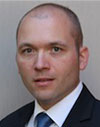 Since July 2016 Frederik has been heading up the new Bosch Connected Devices and Solutions operations in ASEAN at Robert Bosch (SEA) Pte Ltd. Bosch Connected Devices and Solutions develops and sells innovative sensor devices and solutions for the IoT (Internet of Things) market with a special focus on Industry 4.0, Logistics and Connected Mobility. From 2010 until mid of 2016 Frederik set-up Bosch’s Solar panel and later also its solar inverter & battery storage system business in the Australian market.
Before joining the Bosch group Frederik worked in several management roles for German automotive suppliers in Germany and China. Frederik is holding a BSc in Industrial Engineering and a MBA.
Since July 2016 Frederik has been heading up the new Bosch Connected Devices and Solutions operations in ASEAN at Robert Bosch (SEA) Pte Ltd. Bosch Connected Devices and Solutions develops and sells innovative sensor devices and solutions for the IoT (Internet of Things) market with a special focus on Industry 4.0, Logistics and Connected Mobility. From 2010 until mid of 2016 Frederik set-up Bosch’s Solar panel and later also its solar inverter & battery storage system business in the Australian market.
Before joining the Bosch group Frederik worked in several management roles for German automotive suppliers in Germany and China. Frederik is holding a BSc in Industrial Engineering and a MBA.
Presentation: Overall Architectures for Industrial IoT Implementations – Mid-Level View. A Bosch Perspective
An overview of how Bosch sees the opportunities in IoT and the overall approach – big picture. Overall Architectures for Industrial IoT Implementations – mid-level view. Examples of Industrial IoT Applications – a drill down addressing requirements for success and value. Summary of challenges – what works and what doesn’t.


